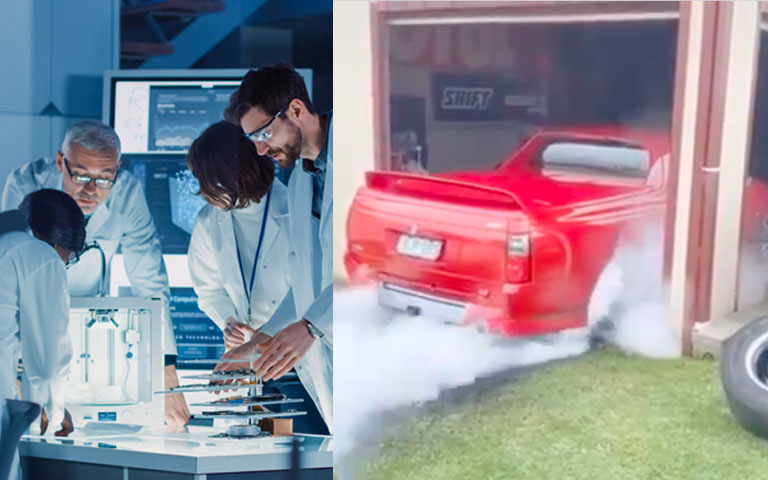
CLANCY OVERELL | Editor | CONTACT
LIFE WILL FIND A WAY: A utility vehicle that is not a Ford Ranger has been discovered in the Brisbane suburb of Belmont overnight, according to the CSIRO.
The discovery, a early 2000s model of Holden ute, has been heralded as a positive sign of vehicle diversity in the heartland of upper-middle-income tradies
“It’s the last thing we expected, not in 2021 ” says professor Wayne Walters, a workuteologist and the study’s lead author.
“We thought we’d find an apprentice in a lowered 2014 Luxy before we stumbled across a Maloo”
Scientists discovered the new population on accident when they overheard the roaring sounds of the ute’s owner putting on a smokeshow, which is a bellowing ballad of revving and incinerating rubber that serves as a mating call.
While the team lack quantitive data to support its findings, because this ute was not actually in the street at the time of its discovery.
Scientists have begun to piece together the routes of the previously-unknown stash of Holdens that had “previously been lost in growing wave of Ford Ranger Wildtraks and Raptors” the Times reported.
“It was quite remarkable to find a ute in your data that was completely unique, and recognize it as a ute that is not a Ford Ranger” Professor Walter told the Betoota Advocate.
“Thanks to the dead cat bounce of the mining boom, and the new HomeBuilder scheme, the Ranger has obviously become the most popular work vehicle in the River City.”
“Usually they are just stock vehicles that double as family cars, but often, deep in the suburbs you’ll find them full spec with the mud guards and an unnecessary snorkel”
“Each discovery of a non-Ranger brings renewed hope for the continued recovery of a balanced ecosystem of utes in greater Brissy.”
According to the CSIRO, the hysterical property market bubble late last decade culled hundreds of thousands of humble SS utes from the streets of Brisbane and left them on the brink of extinction.
Forbes estimated that Brisbane’s HiLux (or LowLux) populations plummeted from 350,000 at the turn of the century, to between 10,000 to 25,000 today. The species remains critically endangered, and is mostly hidden away in project garages.
MORE TO COME.










